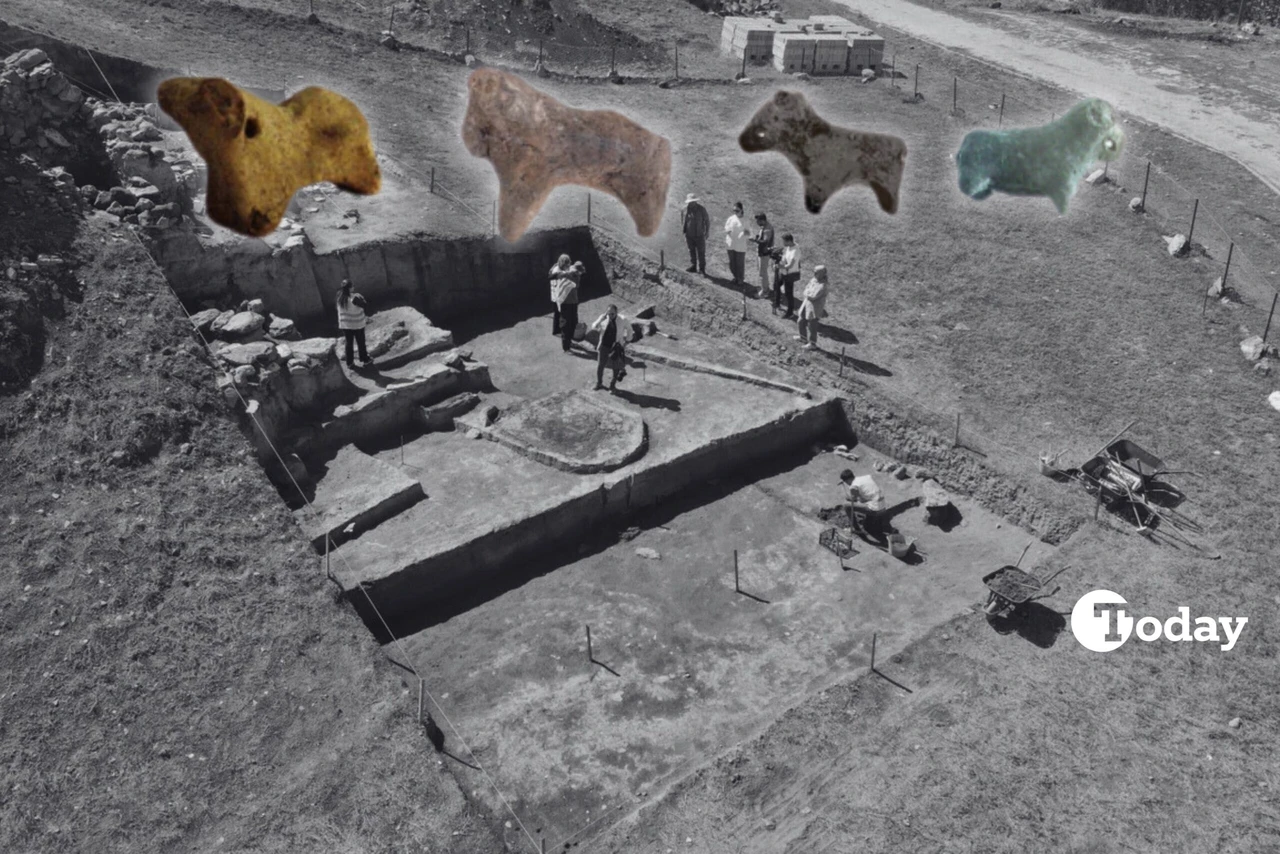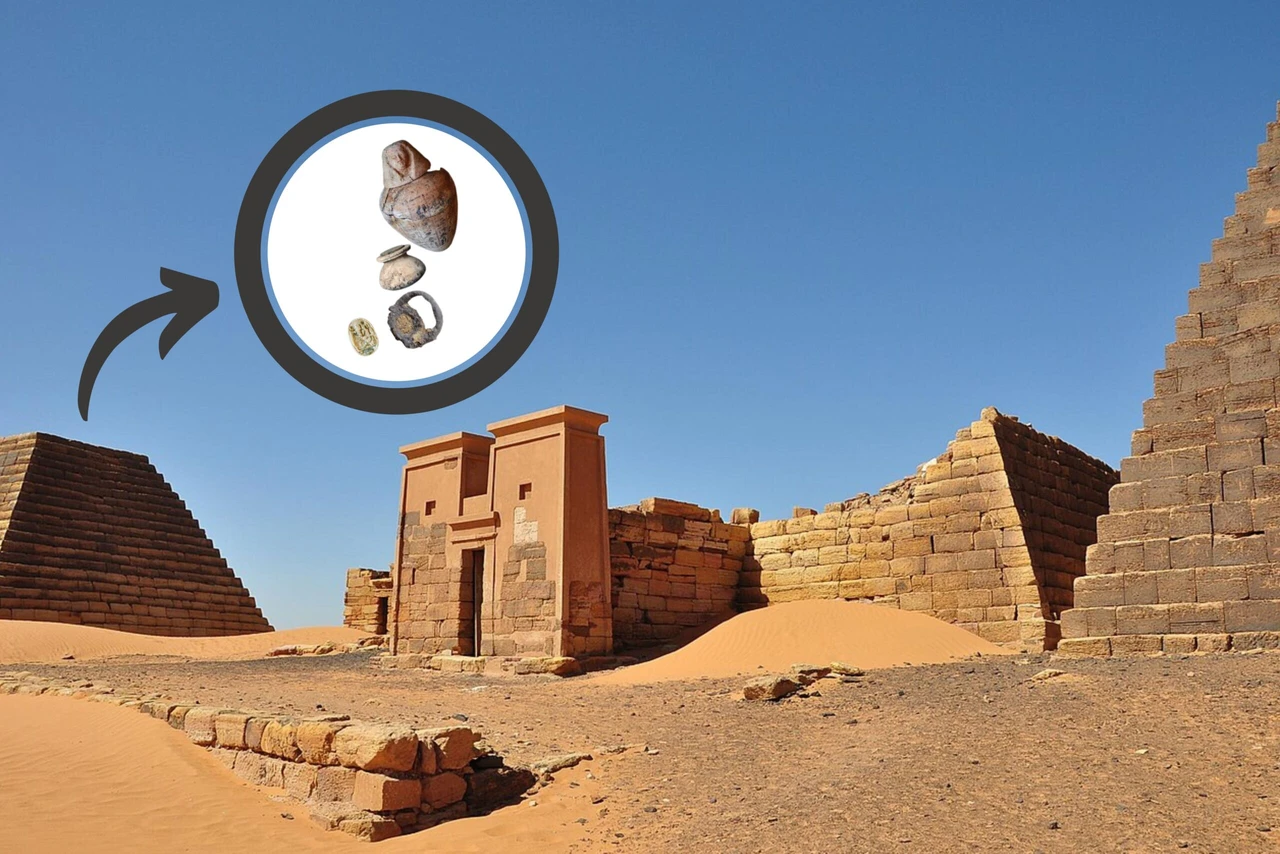Ottoman bird palaces: Combining compassion for animals and elegant architecture
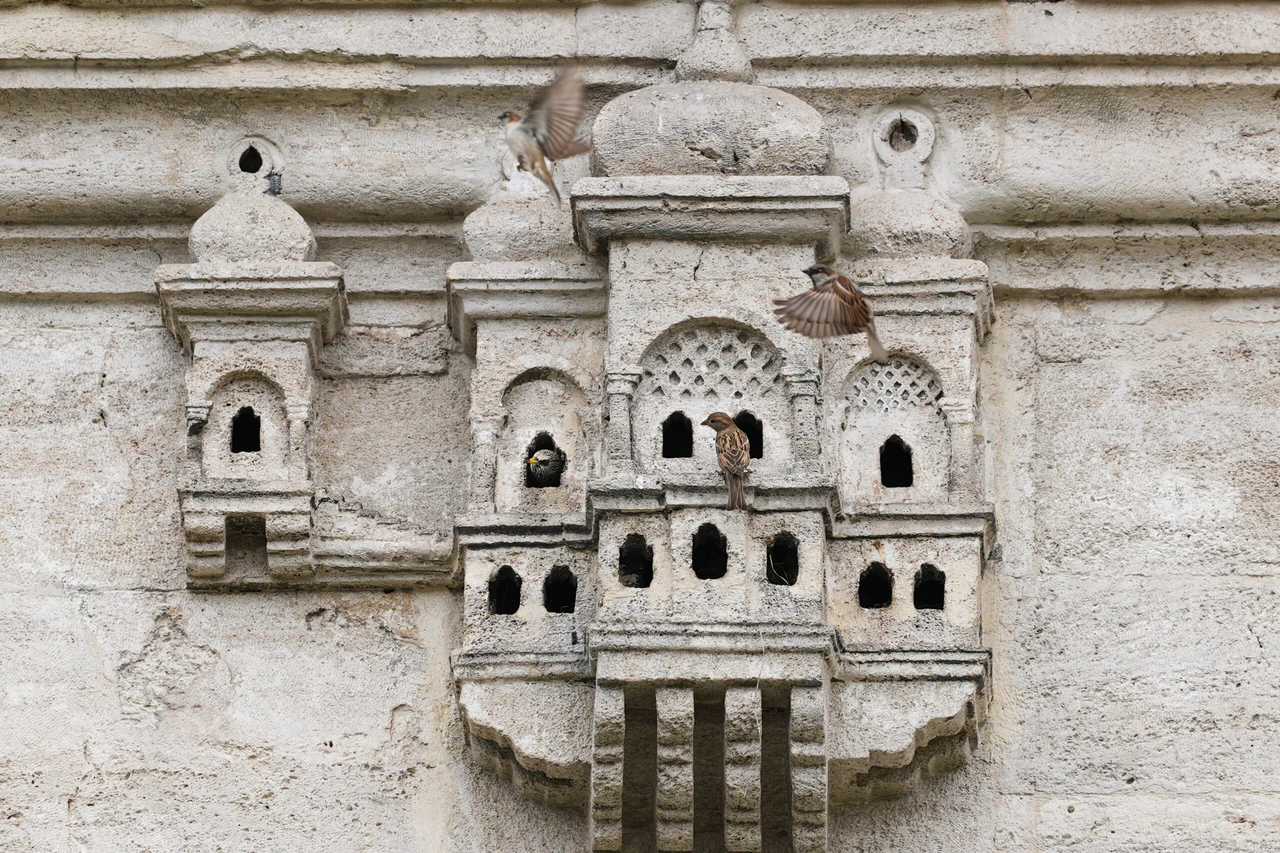 Birds land on the birdhouse built centuries ago on the walls of the Ayazma Mosque in Uskudar, Istanbul, Türkiye, June 24, 2024. (AA Photo)
Birds land on the birdhouse built centuries ago on the walls of the Ayazma Mosque in Uskudar, Istanbul, Türkiye, June 24, 2024. (AA Photo)
In the 16th century, the Ottoman Empire began integrating birdhouses into the architecture of mosques, madrasas, and mausoleums. These birdhouses were built into walls and continue to shelter various bird species even today.
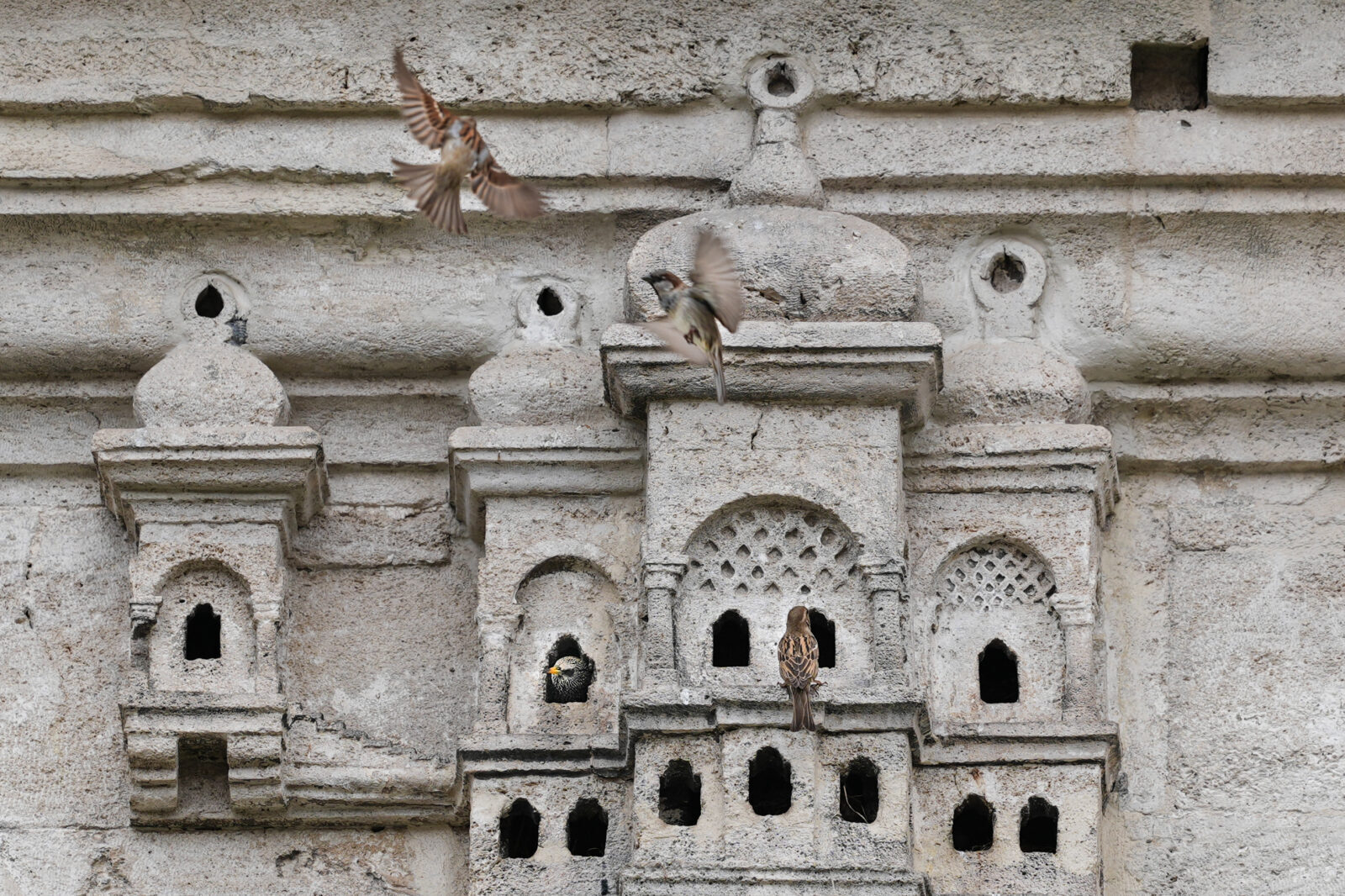
For centuries, ornately decorated birdhouses, known as “bird palaces,” have provided a luxurious haven for sparrows, pigeons, and starlings.
Historian Mehmet Dilbaz says these avian abodes date back to the reign of Suleiman the Magnificent. Initially crafted from wood, they later transitioned to sturdier brick or stone.
“These bird palaces were not only functional but also aesthetically pleasing,” Dilbaz explains, noting the architectural details missing from more modern birdhouses.
These avian sanctuaries, placed in sunny and wind-protected areas, served a dual purpose. They offered a safe haven for birds, and reflected the Ottomans’ respect for nature and commitment to creating beautiful public spaces.
“If our ancestors had built these palaces just so birds could enter, stay here during summer and winter, lay their eggs, or protect themselves from the cold, snow, and rain, they would have just built four walls,” he noted. “However, since our ancestors had a sense of aesthetic pleasure, they built these birdhouses with elegance and detail, in harmony with the architectural elements of the period in which they were made.”
Tucked into the sunny nooks and wind-sheltered corners of Ottoman architecture, ornately designed birdhouses are more akin to miniature palaces. This thoughtful placement ensured the functionality and comfort of the birdhouses. Here, the Ottomans’ keen eye for both practicality and beauty intertwined.
Ottoman Empire’s animal shelters for severe winters
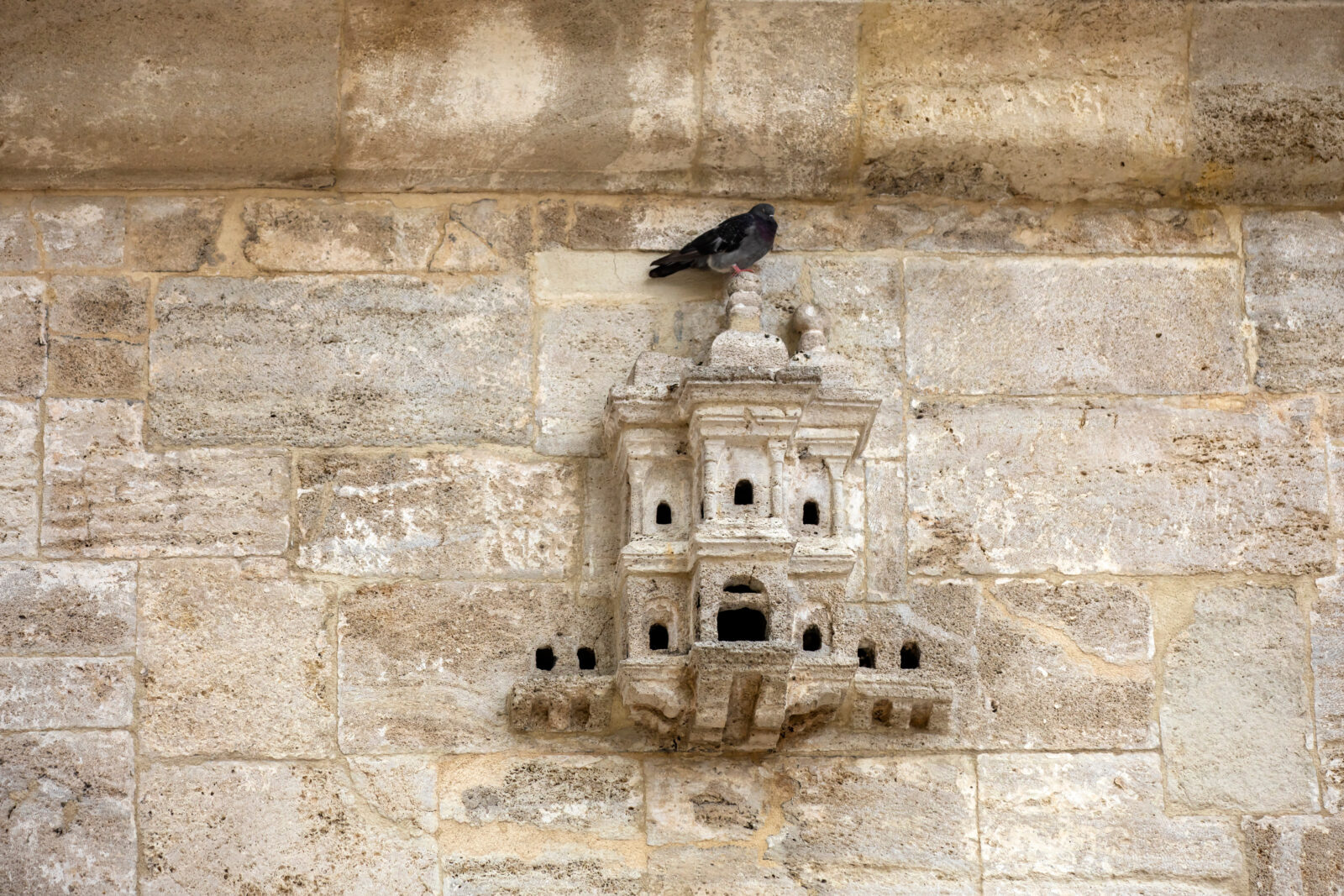
Beyond aesthetics, birdhouses served a vital protective function during harsh winters. Dilbaz mentioned that two centuries ago, winters in Istanbul were severe, with snow cover lasting up to two months.
“In climates where the snow cover didn’t lift for two months during these cold and intense winters, birdhouses were the only places where birds could enter, take shelter, and continue their lives,” he added.
The birdhouses were essential for the survival of many bird species during these harsh conditions. They provided a safe haven for birds to lay eggs and protect themselves from the cold, snow, and rain. This dual purpose of protection and beauty reflects the Ottomans’ deep respect and care for nature.
Ottoman Empire’s legacy in Istanbul

Today, examples of these historical birdhouses can be seen in numerous structures across Istanbul. Notable locations include the Uskudar Valide Sultan Mosque, Uskudar Ayazma Mosque, Eyup Sultan Mosque, Bali Pasha Mosque, Sehzade Mosque, the Tomb of Sultan Mustafa III, Grand Selimiye Mosque, Seyyid Hasan Pasha Madrasa, Sultan Mahmud I School, and the Millet Manuscript Library.
These birdhouses not only continue to serve their original purpose but also provide a glimpse into the architectural and humane sensibilities of the Ottoman era.
The continued presence of these birdhouses in modern times shows the enduring legacy of Ottoman architectural and cultural values. They remind us of a time when human structures were designed to coexist harmoniously with nature, reflecting a civilization that deeply valued all forms of life. The birdhouses of the Ottoman Empire stand as a symbol of this legacy, combining functionality with a profound appreciation for beauty and compassion.
Ottoman birdhouses as means of spiritual connection
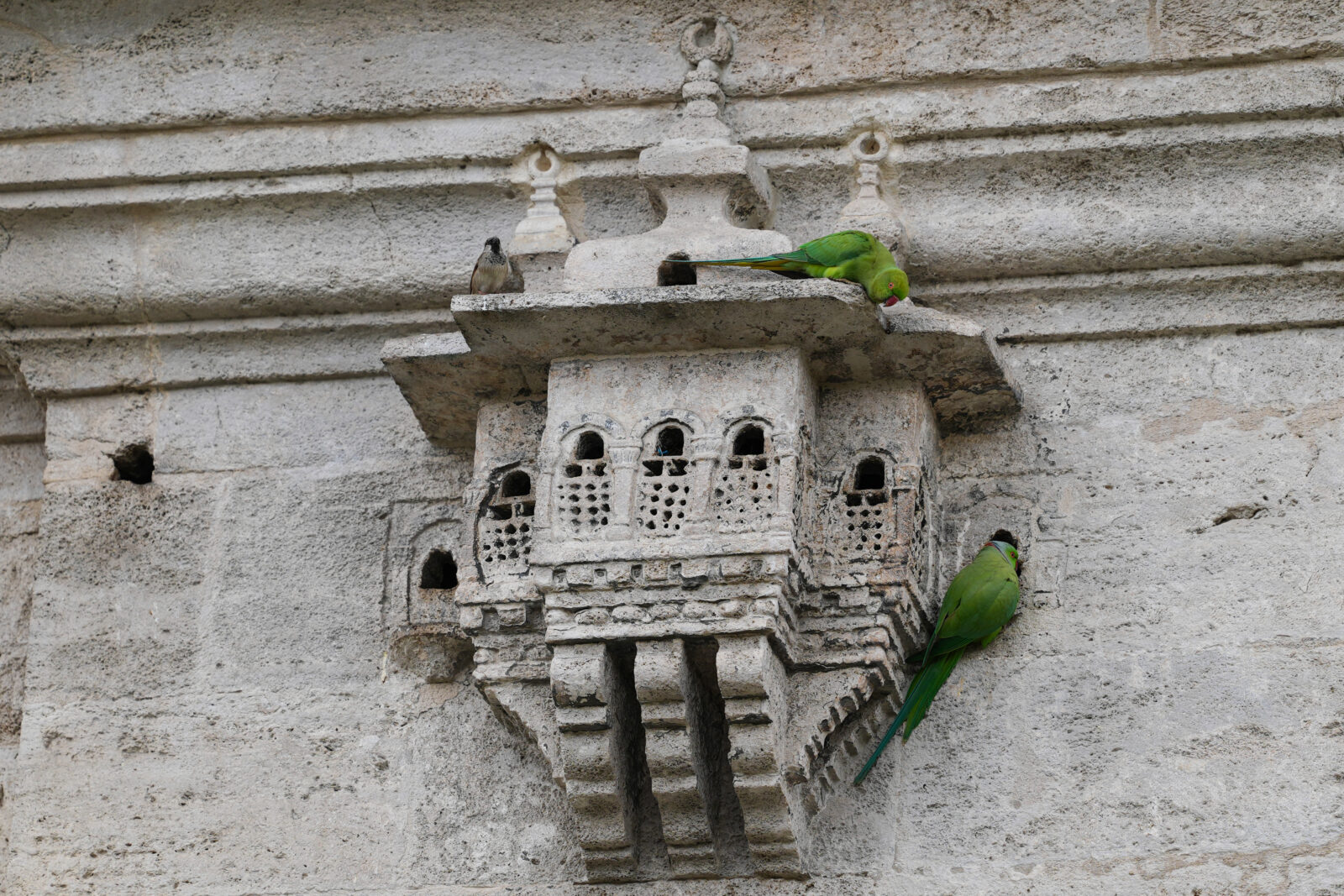
Birdhouses weren’t mere concrete structures; they were intricate miniature works of architecture that adorned the exteriors of significant buildings. Ranging from one-story homes to multi-story mansions, these structures provided refuge to birds while preventing the walls from getting corroded by bird droppings. This dual purpose, architectural and practical, also intertwined with a spiritual vision. The builders of these birdhouses were believed to gain spiritual merit, fostering a love for animals within the community.
Birdhouses came in two distinct styles. The first style featured cells or chambers built onto building facades, resembling tiny mansions or multi-story palaces. Examples can be found at the Istanbul Uskudar Ayazma Mosque and Istanbul Eyup Shah Sultan Fountain. The second style involved carved niches in the walls, creating a cubby-like space. These designs showcased the Ottoman appreciation for artistic diversity even in something as utilitarian as bird shelters.
Ottoman Empire’s love for animals inspired Europe

French traveler Jean De Thevenot, who traveled in the Ottoman Empire in the 17th century, wrote about birdhouses in his travel book, noting the benevolence extended to animals and birds. Another French traveler and painter, Antoine-Laurent Castellan, remarked in 1812 on the Turks’ respect for animals, highlighting that storks and swallows could nest in birdhouses without fear of being shooed away.
German General Helmuth von Moltke also mentioned the Ottoman benevolence toward animals in his memoirs, noting a cat hospital in Uskudar and a nursing place for pigeons in the courtyard of Bayezid Mosque.
These observations from European travelers illustrate how the Ottomans’ compassion for animals left a lasting impression and inspired similar attitudes in Europe.
The birdhouses of the Ottoman Empire, therefore, not only served practical and aesthetic purposes but also played a significant role in fostering a culture of compassion and care for all living beings.
